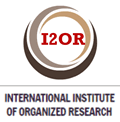Análisis estadístico implicativo en la identificación de factores pronósticos de mortalidad por cáncer cervicouterino
Palabras clave:
análisis estadístico implicativo, factores pronósticos, causalidad en medicina, técnicas estadísticas, regresión logística, cáncer cervicouterinoResumen
Introducción: las técnicas estadísticas utilizadas para la identificación de factores pronósticos son multivariadas; una de las más frecuentes es la regresión logística. En este trabajo se propone otra técnica y para probarla se emplea como problema de salud el cáncer cervicouterino por su elevada incidencia y mortalidad.
Objetivo: evaluar la utilidad del análisis estadístico implicativo en la identificación de factores pronósticos e identificar los factores pronósticos de mortalidad en el cáncer cervicouterino.
Método: se realizó un estudio de casos y controles sobre una población de mujeres con el diagnóstico clínico e histológico de cáncer cervicouterino atendidas en el Hospital Oncológico de Santiago de Cuba de 2014 a 2017. Se aplicó el análisis estadístico implicativo junto con la regresión logística binaria, la que se consideró como estándar de oro para evaluar el desempeño de la técnica propuesta.
Resultados: se identificaron por ambas técnicas como factores de mal pronóstico la edad y de buen pronóstico la quimioterapia. El análisis estadístico implicativo identificó, como factor de mal pronóstico, la metástasis, no detectado por la regresión logística, y apoyó el análisis con una serie de gráficos que ayudaron a la mejor comprensión de los resultados obtenidos.
Conclusiones: se reconoce la utilidad del análisis estadístico implicativo y se propone su empleo de manera habitual para elevar la calidad de estas investigaciones.
Descargas
Citas
1.Flores-Pulido JJ, Martínez-Correa M. Cáncer cervicouterino y virus del papiloma humano. Una mirada desde el enfoque médico familiar. Rev Med Inst Mex Seguro Soc [Internet]. 2015 [citado 22/03/2019];53(Supl 2):S162-4. Disponible en: http://revistamedica.imss.gob.mx/editorial/index.php/revista_medica/rt/printerFriendly/183/520
2.Pelkofski E, Stine J, Wages NA, Gehrig PA, Kim KH, Cantrell LA. Cervical Cancer in Women Aged 35 Years and Younger. Clin Ther [Internet]. 2016 Mar [citado 22/03/2019];38(3):459-466. Disponible en: https://www.ncbi.nlm.nih.gov/pubmed/26899314. https://doi.org/10.1016/j.clinthera.2016.01.024
3.Hernández-Hernández DM, Apresa-García T, Patlán-Pérez RM. Panorama epidemiológico del cáncer cervicouterino. Rev Med Inst Mex Seguro Soc [Internet]. 2015 [citado 22/03/2019];53(Supl 2):S154-S161. Disponible en: https://www.redalyc.org/articulo.oa?id=457744942006
4.Bray F, Ferlay J, Soerjomataram I, Siegel RL, Torre LA, Jemal A. Global cancer statistics 2018: GLOBOCAN estimates of incidence and mortality worldwide for 36 cancers in 185 countries. Cancer J Clin [Internet]. 2018 [citado 22/03/2019];68(6):394-424. Disponible en: https://onlinelibrary.wiley.com/doi/full/10.3322/caac.21492. https://doi.org/10.3322/caac.21492
5.Cuba. Ministerio de Salud Pública. Dirección Nacional de Registros Médicos y Estadísticas de Salud. Anuario Estadístico de Salud 2018 [Internet]. La Habana: MINSAP; 2019 [citado 22/03/2019]. Disponible en: http://files.sld.cu/bvscuba/files/2019/04/Anuario-Electr%C3%B3nico-Espa%C3%B1ol-2018-ed-2019.pdf
6.Abraira V, Muriel García A, Montes Ramírez ML. Lectura crítica de estudios de pronóstico. Estudios de cohortes. En: Cabello JB. Lectura crítica de la evidencia clínica. Barcelona: Elsevier; 2015. p. 101-116 [citado 22/03/2019]. Disponible en: http://dsp.facmed.unam.mx/wp-content/uploads/2013/12/Anexo-1A.-Abraira-V.-Lectura-critica-de-estudios-de-pronostico.pdf
7.Gras R, Régnier JC, Lahanier-Reuter D, Marinica C, Guillet F. L'Analyse Statistique Implicative. Des Sciences dures aux Sciences Humaines et Sociales 3ra ed. Francia: Cépaduès Editions; 2017.
8.Pardo-Santana S, Sagaró-del-Campo NM, Zamora-Matamoros L, Viltre-Castellanos DM. Utilidad del análisis estadístico implicativo para identificar factores pronósticos en pacientes con cáncer de mama. Rev Electrón Zoilo [Internet]. 2019 Jul-Ago [citado 25/05/2019];44(4):[aprox. 9p.]. Disponible en: http://revzoilomarinello.sld.cu/index.php/zmv/article/view/1869/pdf_608
9.García Mederos Y, Zamora Matamoros L, Sagaró del Campo N. Análisis estadístico implicativo en la identificación de factores de riesgo en pacientes con cáncer de pulmón. MEDISAN [Internet]. 2015 Ago [citado 20/01/2019];19(8):947-957. Disponible en: http://scielo.sld.cu/scielo.php?script=sci_arttext&pid=S1029-30192015000800003
10.Moraga Rodríguez A, Zamora Matamoros L, Sagaró del Campo NM, Moraga Rodríguez A, Rodríguez Griñán A. Análisis estadístico implicativo para la identificación de factores pronósticos de la mortalidad por cáncer de pulmón. MEDISAN [Internet]. 2016 Mar [citado 15/01/2019];20(3):344-353. Disponible en: http://scielo.sld.cu/scielo.php?script=sci_arttext&pid=S1029-30192016000300010
11.Moraga Rodríguez A, Zamora Matamoros L, Sagaró del Campo NM, Moraga Rodríguez A, Rodríguez Griñán A. Análisis estadístico implicativo para la identificación de factores pronósticos de la mortalidad por cáncer de mama. MEDISAN [Internet]. 2017 Abr [citado 15/01/2019];21(4):395-406. Disponible en: http://scielo.sld.cu/scielo.php?script=sci_arttext&pid=S1029-30192017000400003
12.Moraga Rodríguez A, Zamora Matamoros L, Sagaró del Campo NM, Moraga Rodríguez A, Rodríguez Griñán A. Análisis estadístico implicativo para la identificación de factores pronósticos de la mortalidad por cáncer de próstata. MEDISAN [Internet]. 2018 Ene [citado 15/01/2019];22(1):48-56. Disponible en: http://scielo.sld.cu/scielo.php?script=sci_arttext&pid=S1029-30192018000100007
13.Paez Candelaria Y, Sagaró del Campo NM, Zamora Matamoros L. Análisis estadístico implicativo en la determinación de factores pronósticos del estado nutricional del paciente grave al egreso. MEDISAN [Internet]. 2018 Jun [citado 20/01/2019];22(6):431-440. Disponible en: http://scielo.sld.cu/scielo.php?script=sci_arttext&pid=S1029-30192018000600007
14.Galano Vázquez K, Sagaró del Campo NM, Zamora Matamoros L, Lambert Matos Y, Mingui Carbonell E. Análisis estadístico implicativo en la identificación de factores pronósticos de mortalidad del cáncer renal. Rev Inf Cient [Internet]. 2019 [citado 14/05/2019];98(2):157-170. Disponible en: http://www.revinfcientifica.sld.cu/index.php/ric/article/view/2268/3991
15.Sagaró Del Campo NM, Zamora Matamoros L. ¿Por qué emplear el análisis estadístico implicativo en los estudios de causalidad en salud? Rev Cubana Informática Méd [Internet]. 2019 [citado 20/06/2019];11(1):88-103. Disponible en: http://revinformatica.sld.cu/index.php/rcim/article/view/316/pdf_94
16.Sagaró Del Campo NM, Zamora Matamoros L. Análisis estadístico implicativo versus Regresión logística binaria para el estudio de la causalidad en salud. MULTIMED [Internet]. 2019 Nov-Dic [citado 15/01/2019];23(6):1416-40. Disponible en: http://scielo.sld.cu/scielo.php?script=sci_arttext&pid=S1028-48182019000601416 &lng=es
17.Sagaró Del Campo NM, Zamora Matamoros L. ¿Cómo interpretar el análisis estadístico implicativo en los estudios de causalidad en salud? MEDISUR [Internet]. 2020 [citado 15/01/2019];18(2):[aprox. 14 p.]. Disponible en: http://www.medisur.sld.cu/index.php/medisur/article/view/4415/3082
18.Moore KN, Java JJ, Slaughter KN, Rose PG, Lanciano R, DiSilvestro PA, et al. Is age a prognostic biomarker for survival among women with locally advanced cervical cancer treated with chemoradiation? An NRG Oncology/Gynecologic Oncology Group ancillary data analysis. Gynecol Oncol [Internet]. 2016 Nov [citado 15/01/2019];143(2):294-301. https://www.ncbi.nlm.nih.gov/pmc/articles/PMC5693242/. https://dx.doi.org/10.1016/j.ygyno.2016.08.317
19.Sant M, Aareleid T, Berrino F, Bielska Lasota M, Carli PM, Faivre J, et al. EUROCARE-3: survival of cancer patients diagnosed 1990-94—results and commentary. Ann Oncol [Internet]. 2003 [citado 15/01/2019];14(Suppl 5):v61-118. Disponible en: https://www.ncbi.nlm.nih.gov/pubmed/14684501. https://doi.org/10.1093/annonc/mdg754
20.Tomiyoshi Nakagawa J, Martínez Espinosa M, Barbieri M, Schirmer J. Cervical carcinoma: survival rate and prognostic factors in women in the state of Mato Grosso. Acta Paul Enferm [Internet]. 2011 [citado 15/01/2019];24(5):631-637. Disponible en: https://www.scielo.br/scielo.php?script=sci_arttext&pid=S0103-21002011000500006&lng=pt&nrm=iso&tlng=en. http://dx.doi.org/10.1590/S0103-21002011000500006
21.Li H, Wu X, Cheng X. Advances in diagnosis and treatment of metastatic cervical cáncer. J Gynecol Oncol [Internet]. 2016 Jul [citado 25/01/2019];27(4):e43. Disponible en: https://ejgo.org/DOIx.php?id=10.3802/jgo.2016.27.e43. https://doi.org/10.3802/jgo.2016.27.e43
22.Jae Kim H, Whan Ha S, Hong-Gyun W. Treatment outcomes and prognostic factors in uterine cervical cancer patients treated with postoperative extended field radiation therapy. J Gynecol Oncol [Internet]. 2009 [citado 25/01/2019];20(4):227-231. Disponible en: https://ejgo.org/Synapse/Data/PDFData/1114JGO/jgo-20-227.pdf. https://doi.org/10.3802/jgo.2009.20.4.227
23.Hinojosa García LM, Dueñas González A. Papel de la quimioterapia en el tratamiento del carcinoma cervicouterino. Rev Inst Nacional Cancerol (Mex) [Internet]. 2000 [citado 25/01/2019];46(1):47-57. Disponible en: https://www.medigraphic.com/pdfs/cancer/ca-2000/ca001g.pdf
24.Duska LR, Suh DH, Wilson M, Yamada SD. International Ginecology Cancer Society (IGCS) 2018: Meeting report. Gynecol Oncol [Internet]. 2019 Ene [citado 25/01/2019];152(1):7-10. Disponible en: https://www.gynecologiconcology-online.net/article/S0090-8258(18)31301-5/abstract. https://doi.org/10.1016/j.ygyno.2018.10.020
25.Kim K, Cho SY, Kim BJ, Kim MH, Choi SC, Ryu SY. The type of metastasis is a prognostic factor in disseminated cervical cáncer. J Gynecol Oncol [Internet]. 2010 Sep [citado 23/01/2019];21(3):186-190. https://www.ncbi.nlm.nih.gov/pmc/articles/PMC2948227/. https://dx.doi.org/10.3802/jgo.2010.21.3.186
26.Cabral Tavares M, Beserra Sousa R, Oliveira e Silva T, Almeida Moreira L, Teófilo Lima Silva LT, Cabral Tavares C, et al. Prevalence of prognostic factors for cancer of the uterine cervix after radical hysterectomy. Sao Paulo Med J [Internet]. 2009 [citado 23/01/2019];127(3):145-149. Disponible en: https://www.scielo.br/scielo.php?script=sci_arttext&pid=S1516-31802009000300007&lng=en&tlng=en. http://dx.doi.org/10.1590/S1516-31802009000300007
27.Endo D, Todo Y, Okamoto K, Minobe S, Kato H, Nishiyama N. Prognostic factors for patients with cervical cancer treated with concurrent chemoradiotherapy: a retrospective analysis in a Japanese cohort. J Gynecol Oncol [Internet]. 2015 Jan [citado 23/01/2019];26(1):12–18. Disponible en: https://www.ncbi.nlm.nih.gov/pmc/articles/PMC4302279/. https://doi.org/10.3802/jgo.2015.26.1.12
28.Solís JA, Silva M, Bravo E, León M, Merino G, Díaz R, et al. Pronóstico del cáncer cérvico uterino estadios IIB-IIIB tratados con radio quimioterapia: experiencia Hospital Van Buren, Valparaíso, Chile. Rev Colomb Obstet Ginecol [Internet]. 2007 Dic [citado 29/01/2019];58(4):268-276. Disponible en: https://revista.fecolsog.org/index.php/rcog/article/view/436/474. https://doi.org/10.18597/rcog.436
29.Biewenga P. Prognostic factors in cervical cancer [Tesis]. Amsterdam: University of Amsterdam; 2015. Disponible en: https://pure.uva.nl/ws/files/2525201/160595_Proefschrift_PetraBiewenga.pdf
30.Sagaró-del-Campo NM, Zamora-Matamoros L. Métodos gráficos en la investigación biomédica de causalidad. Rev Electrón Zoilo [Internet]. 2019 [citado 10/06/2019];44(4):[aprox. 9 p.]. Disponible en: revzoilomarinello.sld.cu/index.php/zmv/article/download/1846/pdf_609
Descargas
Publicado
Cómo citar
Número
Sección
Licencia
Aquellos autores/as que tengan publicaciones con esta revista, aceptan los términos siguientes:
- Los autores/as conservarán sus derechos de autor y ceden a la revista el derecho de primera publicación de su obra, el cuál estará simultáneamente sujeto a una licencia Creative Commons Atribución/Reconocimiento-NoComercial 4.0 Internacional — CC BY-NC 4.0 que permite a terceros compartir la obra siempre que se indique su autor y su primera publicación esta revista.
- Los autores/as podrán adoptar otros acuerdos de licencia no exclusiva de distribución de la versión de la obra publicada (p. ej.: depositarla en un repositorio institucional o publicarla en un volumen monográfico) siempre que se indique la publicación inicial en esta revista.
- Se permite y recomienda a los autores/as difundir su obra a través de Internet (p. ej.: en archivos telemáticos institucionales o en su página web) antes y durante el proceso de envío, lo cual puede producir intercambios interesantes y aumentar las citas de la obra publicada. (Véase El efecto del acceso abierto).





 15 diciembre del 2025
15 diciembre del 2025


